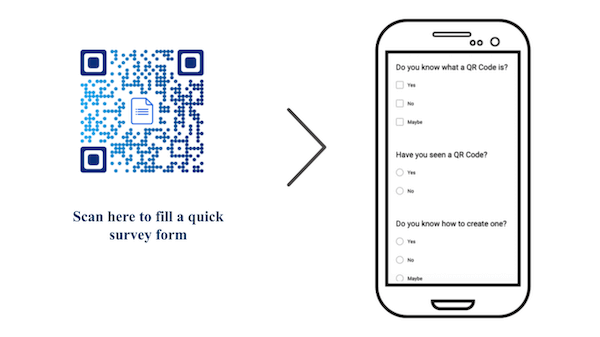You want to create a Google Form for one of your use cases. It could be to:
1. Share a quiz among students in your classroom
2. Get your customer’s feedback for one of your products
3. Get people to register for one of your upcoming events
4. Survey attendees after your event
5. Conduct market research among your target audience
6. Collect ideas for a project from your clients/employees
Or it could be for any other such use case. And you are right. Google Forms are one of the best ways to receive responses from your target audience.
You probably want to use print media to share your Google Form with the audience.
There are two ways to share a Google Form via print media:
1. Using the sharable link
The simplest way to share a Google Form via print media is by adding the link to it. And an instruction that tells people what they need to do. Or why they need to do it.
For example—Open the link to submit your feedback.
But to be honest, not many people will actually bother to open the link. Why?
Because to do it, they will have to pull out their smartphone to open the browser, tediously type the entire link, and finally visit the form.
This is a long process that needs them to put both time and effort. While some of them might do it, others probably won’t.
So what you need to do here is—make it easier for your audience to visit the form. How?
Related : QR Code For App Link
2. Using a QR Code
You know what a QR Code is. It is an advanced level barcode that stores alphanumeric content. And it helps you share this content by making your print media creatives actionable.
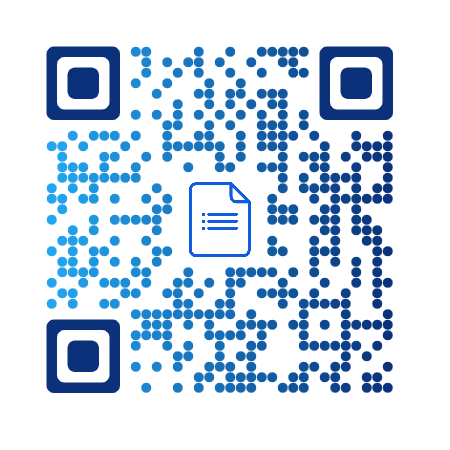
All that your audience needs to do is—scan the QR Code with their smartphones and see the encoded information. That simple.
You want to use a QR Code to share Google Form with your audience. In this article, we’ll show you how to do this.
B. How to create a Google Form
The first step here is to create a Google Form. If you have already created one, you can directly proceed to the next step. In case you have not, here’s how you can create it:
1. Login to your Gmail account and go to Google Forms
2. Select Blank form
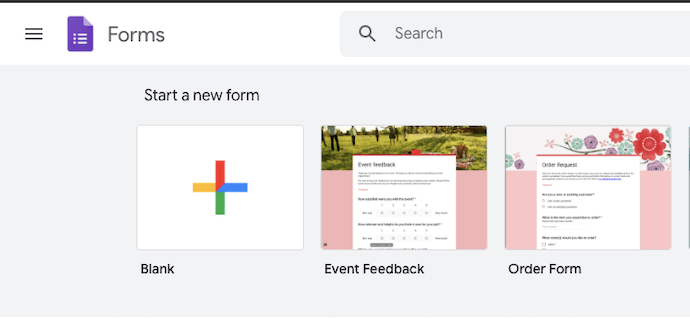
3. On the page that loads, start customizing your form by adding a title. You can also add Form Description to let your audience know what the questionnaire is about
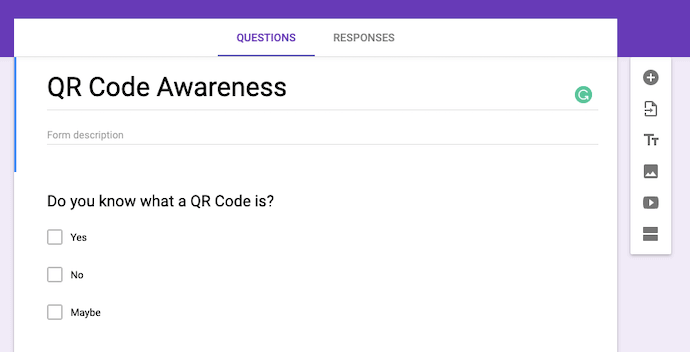
4. Next, start adding your questions. You can use the dropdown option at the right to choose what kind of responses you want to receive. For example—short answer, paragraph, and checkboxes
Note you must be considerate about the time and effort your audience will have to put while filling the form. The forms which are simple and precise tend to have a better response rate than longer forms.
So you must keep your form as short and as easy as possible. For example—add objective answer choices instead of subjective ones wherever possible.
Similarly, there are a couple of other things you can ensure to increase the response rate.
5. Once you have created the form, click on Send option on the top right corner
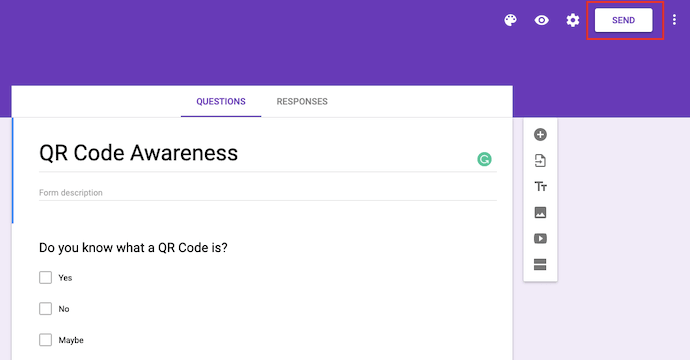
6. Now click on the Link icon and copy the link
Now that you have created the Google Form, you can proceed to create a QR Code for it.
C. How to create a QR Code for Google Form
To create a QR Code, you will need a QR Code generator. And before you proceed to search for a QR Code generator, decide if you want to create a static or a dynamic QR Code.
Don’t know what it means? Keep reading to know.
A static QR Code stores the target content directly. Hence, once you create a static QR Code, you cannot edit it. In case you need to do that, you will have to create a new QR Code altogether. Also—a static QR Code doesn’t allow you to track its scanning activity.
On the other hand, a dynamic QR Code doesn’t store the target content directly. It stores a short URL (also called redirecting URL) that takes you to the actual data.
Hence, you can edit the content of a dynamic QR Code even after creating it. Yet your QR Code will remain the same. And a dynamic QR Code also allows you to monitor its scanning activity. For example—how many people have scanned it, when they did it, and where they did it from.
Once you know which type of QR Code you need, you can go ahead to find a QR Code generator. Here is a detailed comparison chart of the top QR Code generators available online. You can go through it to select the best-suited option for your use case.
Step-by-step procedure to create QR Code
Using Scanova QR Code generator for a demo, here’s how you can create a QR Code for your Google Form:
1. Go to Scanova QR Code Generator
2. Select the QR Code category you want. Here, we want the Website URL QR Code category.
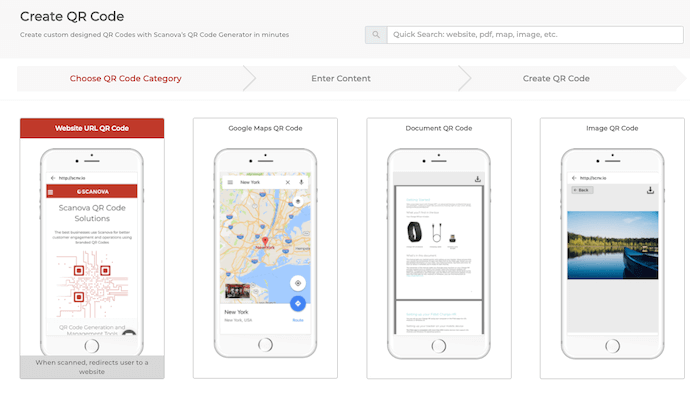
3. Enter the URL of your website and click Continue
4. Next you’ll see two QR Code designs on your screen: Custom with Logo and Custom with Background. You can test these QR Codes with a QR Code reader application
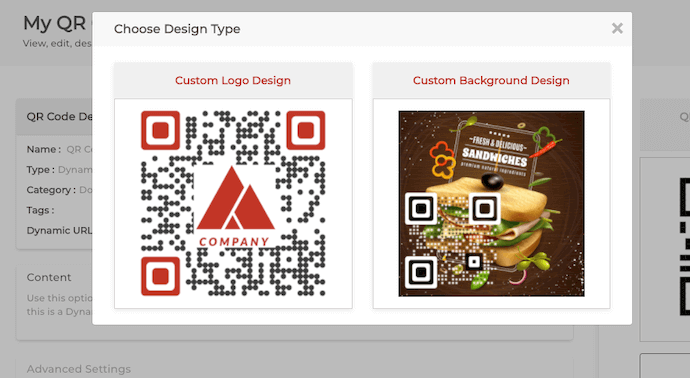
5. Once you finalize the QR Code design, click Done Editing.
6. Now go ahead to Download your QR Code. A pop-up will appear prompting you to sign-up for a 14-day free trial. Note that you’ll need to sign-up to be able to download your QR Code image
7. Once you complete the Sign Up, you can download the QR Code you created by tapping on the download icon.
8. A window will appear. Here, specify the QR Code image size and format. Once done, click on Export.
That’s it. The QR Code for your Google Form will be downloaded in the specified format and size. But before you go ahead to add this QR Code to your print media campaign, you must follow some best practices.
D. Best practices for a Google Form QR Code
First, you must add design to your QR Code, especially if your use case is promotional. Why?
Because custom-designed QR Codes act as point-of-engagement.
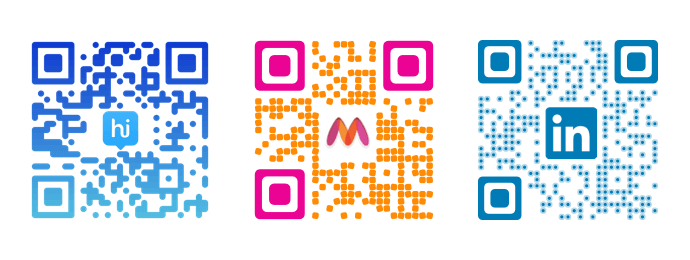
And it is a fact that they attract many more scans than black-and-white ones. Hence, you must consider designing the QR Codes by adding your company’s/brand’s logo and colors.
Second, ensure that you export the QR Code image in the right format. Not sure what it means?
Common image formats such as PNG and JPG work fine for screen resolutions. But if you’re adding the QR Code on print media creatives, you must export it in vector formats such as SVG and EPS.
Images in these formats don’t pixelate even when zoomed in or out. Hence, they are recommended for printing purposes.
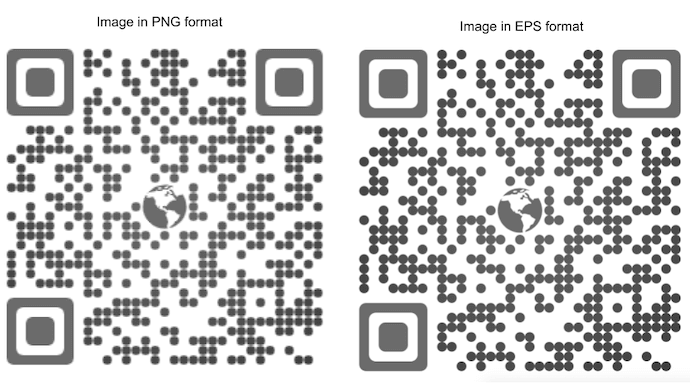
Third, always add a suitable call-to-action statement (CTA) with your QR Code. For example—Scan here to register yourself for the event.
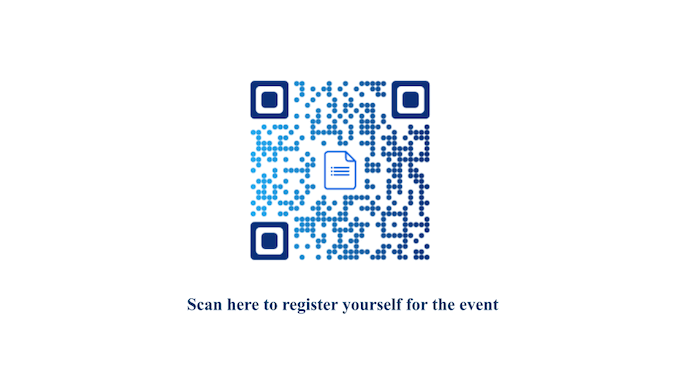
You’ll be surprised to see how far a little nudge like this goes.
Finally, analyze your responses well and acknowledge your audience. For example—say your end-goal was to draw insights on what your customers think about your products.
Here, you can thank them for their participation via an email. A small step like this makes them feel appreciated.
And once you act on the insights drawn from the data collected, share it with them. It implies that you actually considered their problems and improved your services.
That’s it. You now know everything about creating a QR Code for Google Form. It makes your print media creatives actionable for the target audience. And helps you maximize your response rate.
[cta1 caption=”Create a QR Code for your Google Form” content=”Help your audience access the form and maximize your survey responses” buttontext=”Create QR Code Now” destination=”https://app.scanova.io/qr/create/url?utm_source=smb-pr-google-form-qr-code-cta&utm_medium=blog&utm_campaign=content” image=”https://scanova.io/blog/wp-content/uploads/2016/12/qrcode-8.png”]Still have any queries? Ask them in the comments.
